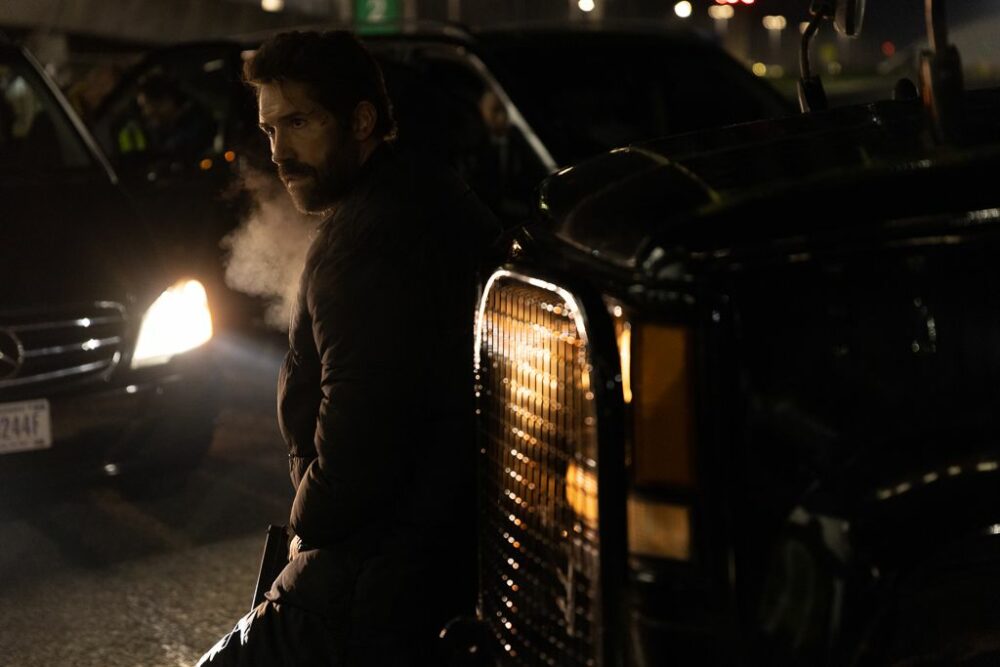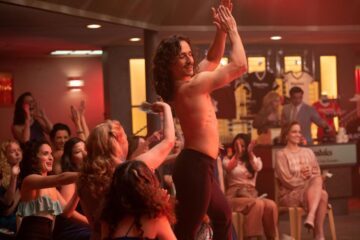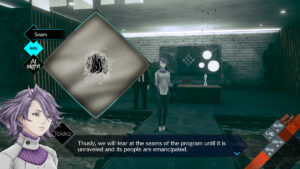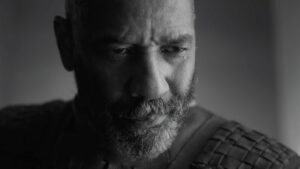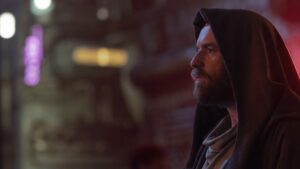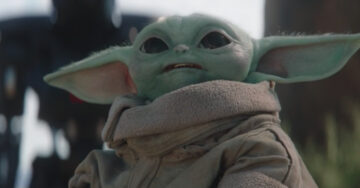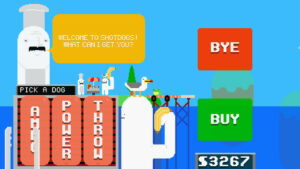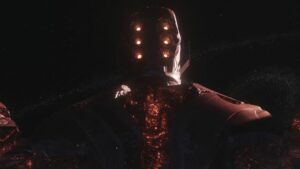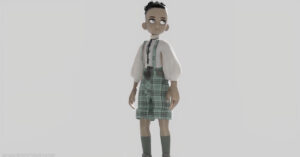In 2021, One Shot blasted into action fans’ hearts, making full use of Scott Adkins’ varied skill set. It’s a high-octane tactical action movie with a fun gimmick: The whole movie is designed to look like one continuous take.
The newly released sequel, One More Shot, now available everywhere you rent or purchase movies digitally, is a more confident, polished effort than the original, adding a compelling and familiar action-movie setting (an airport), more action legends (Tom Berenger and Michael Jai White), and a string of exciting fight sequences that make the most of the location, the conceit, and the talent.
One More Shot also reunites director James Nunn with Adkins and fight choreographer Tim Man, who’ve each worked with Nunn four times. But this movie is Nunn and Adkins’ most accomplished collaboration yet. Polygon spoke with Nunn about the difficulties of shooting an action movie in one take, following in the wake of Sam Mendes’ Oscar winner 1917, hiding the cuts, what he learned from the first movie, and his hopes for the future of the series.
This interview has been lightly edited for length and clarity.
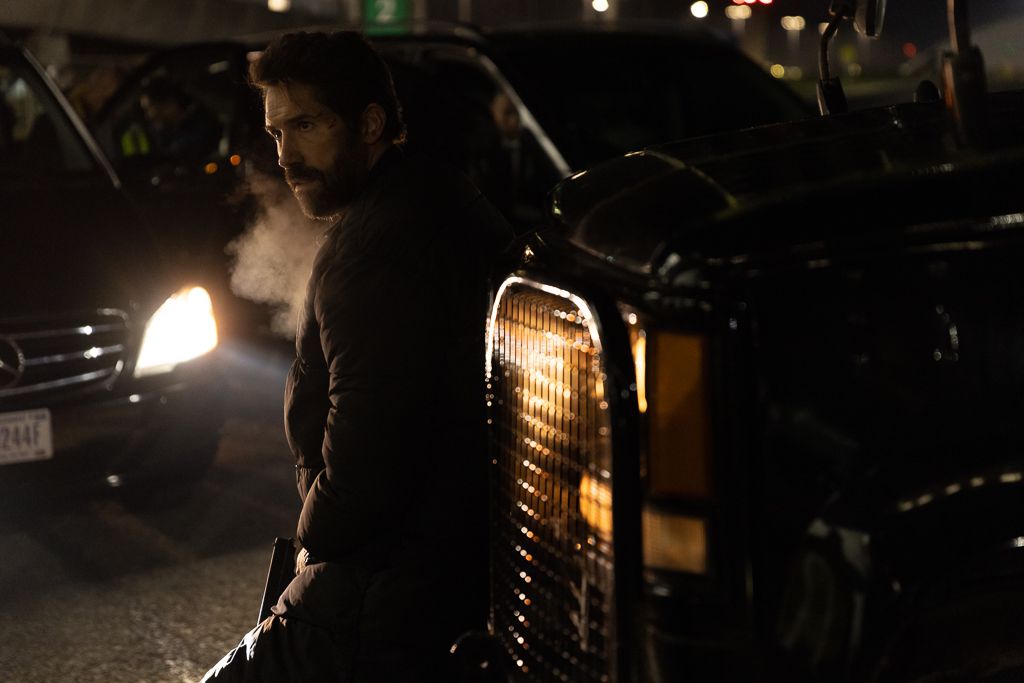
Polygon: As someone who’s filmed more conventional action movies, like Eliminators, what do you think is different for the audience when a movie is portrayed as one continuous take?
James Nunn: Well, it’s funny, because it started as an exercise in How can I push something? How can I be different? How can I be unique? How can I use Scott’s raw, amazing ability to the best? And how can I use my technical knowhow? So it actually started as more of an experiment in just proving to people, I’m really good technically, he’s really good physically and on camera — merge them skills, make a movie. That was where the initial pitch came from. But as time went on, and as we started filming it, honestly, I’ve kind of fallen in love with doing it this way. You realize that you’re pushing this immersion on your audience.
All movies have a ticking clock. That’s the premise of a lot of stories: You’re going from A to B, or A to Z, but it’s not about the letters, it’s about the journey between. There’s always a ticking-clock narrative, especially in action movies. Whether it’s a bomb going off or saving your loved one because she’s about to fall into acid, there’s always a timer. And I think what happens when you don’t manipulate time with cuts is, you’re actually forcing people to, almost on a subconscious level, just feel that timer a bit more, feel the urgency, and be a bit more present in it.
Now look, a lot of problems come with the style, because you can’t film Scott as the best martial artist in the world, necessarily, because you can’t do the angles that really show off what he can do. Equally, he can’t be like, spinning around doing amazing butterfly pirouette kicks, because it would just be of a different world. So the format comes with restrictions. And we know what we’re doing. We try to hold back on the flashiness and go for, like, this grounded CQC [close-quarters combat] military vibe, which fits really well. I think the elongated take of it, whether you like it or not, you’re just being sucked in.
Certain actors will really rise to the occasion and be the best you’ve ever seen, because they’re like, I don’t want to be the one in this 10-minute take who messes it up. So they switch on to this level of authenticity and focus, and you can feel that as well. But then equally, if you’ve got a slightly weaker performance, it’s harder to hide away from that.
I’ve fallen in love with it. I won’t do it forever. I will return to normal, conventional moviemaking soon, I’m sure. But I’m having a lot of fun. And I am so pleased with the reception that we’ve had.
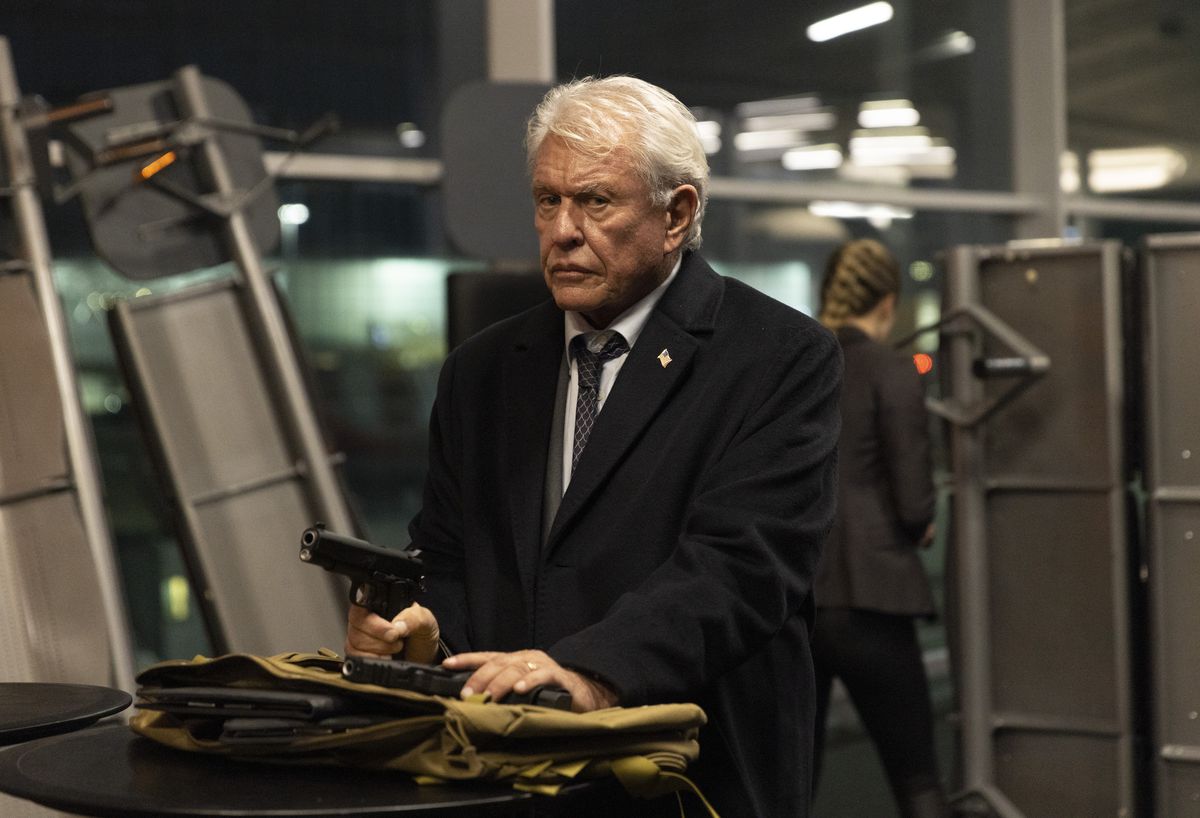
What did you learn from One Shot that you applied to One More Shot? The movie feels more confident — did it feel that way to you while shooting?
For sure, we did. And I say “we” because I’ve got a very solid core team who I love working with, and they’re all on the same train with me. I think the first movie, although I was confident… Look, I tried to keep it a bit of a secret in the first one, but we all know there’s hidden cuts in the movie. Don’t get me wrong, I will run a take as long as I can. There’s three reasons to break: safety, geography, or actor availability, if you have to shoot out of sequence. Those are really the reasons I cut. If not, I’ll go for as long as I can within that time frame. So you’re really looking at, like, eight- to 10-minute takes.
On the first movie, I knew we could do it, but we hadn’t done it, in that we hadn’t actually hidden cuts before. So I put a lot of the focus in the first movie on making sure that we could hide the cuts. The difference with the second movie was that weight had been lifted. We’d done it. I knew we could do it. I knew how to do it. I knew how to get myself out of a bind, even if something wasn’t working on the day and I needed to get out of it. Because we’d tried and tested it before.
So that weight had been lifted off my shoulders. So it’s like, OK, well, now I’ve actually got the time to think a bit more about being more elaborate with the camera. And also, we had a tiny bit more money on this one. So we could do stuff like hand the camera out of the car and throw the camera down a stairwell on a rig and know it would be OK. We were able to be a little bit more tricksy.
How did you manage filming at London Stansted Airport?
That was the most difficult part of this whole process, filming in the working environment of an international airport. We knew we wanted to go bigger. The fan response to the first one was overwhelmingly positive, and much more than we’d anticipated. Obviously when you set out on these ventures you believe in the movie — you have to, otherwise you wouldn’t do it. But I really wanted it to land. And it didn’t necessarily get the big push I hoped for, because of COVID at the time, but it did enough to really find an audience.
We listened to the feedback of the fans. Not necessarily the big paper reviews, but the fans. And we tried to respond to that in this movie and give them more fights, give them more hand-to-hand, give them more plot, but also make it not feel as low-budget of a location, which was something we bumped into a lot in the comments.
So once we found out we were given the lucky opportunity to go down the road for number two, we embarked on what we’re going to do, and we were like, We’re never gonna get an airport. We’re just imagining we’re gonna get, like, some private little runway. It’s gonna be rubber, it’s gonna feel low-budget anyway. So the producer, Ben Jacques, was tasked with Can you get an airport? And as if by some sort of miracle, the fourth-largest airport in England, Stansted Airport, showed an interest. They were like, Oh, we love the sound of this. Yeah, come on down. And so we did.
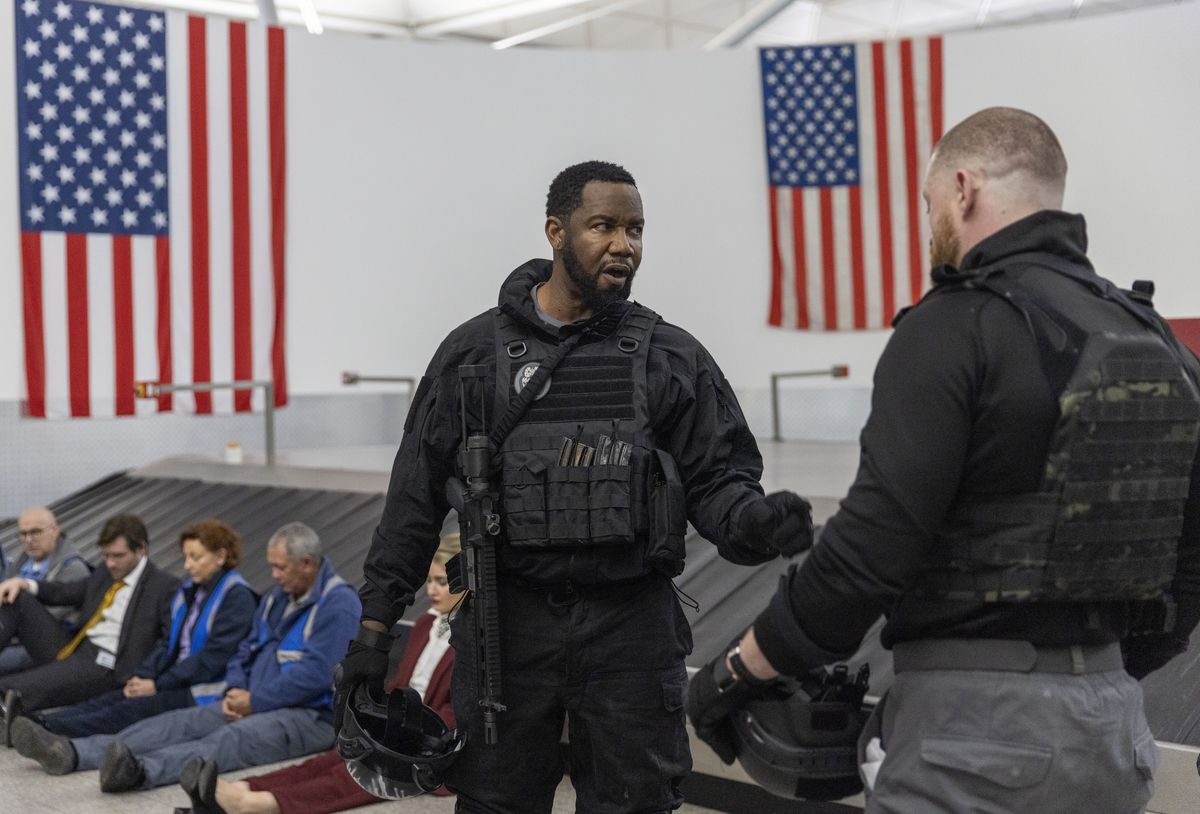
So we went down and we looked, and we thought it’d be perfect. And then we wrote the script around it. But this is where it became tricky. The first movie, we had a derelict location, which we could film for 11 hours a day, no questions asked, easy-peasy. But going to Stansted came with a huge amount of restrictions, the same restrictions you face as a traveler flying internationally. You’re going through the metal detector, you’re going through the screening thing. Getting a hundred crew in with guns, with knives, with fake explosives takes an hour off your day easily.
Equally, you’ve got tourists running around waiting to catch their flights and stuff. In the U.K., you can’t fly between midnight and 4 a.m. They basically close it down so that people can sleep. And that was when we shot the movie. So we’d get in the airport at like 7 or 8 at night, do some rehearsals, have a bit of food. And then we really started kicking off between midnight and 4. It was a hard stop at 4, because the planes were coming in, or people getting on planes.
One particular night, we were in the baggage claim area, and we had a long take and an hour to go. And we’ve had months and months of meetings about this. But you know, there’s always one guy who’s never at the meetings who shows up and is like, Oh, you’ve got to wrap in 20 minutes. We managed to get two takes that were nine minutes each. The second one’s in the movie.
Everyone knows the layout of an airport, so it becomes a lot easier for the audience to ground themselves in where things are, what access-restricted locations look like, that kind of stuff. But it lets you interact more with the environment in terms of the action. What else did the airport location add to the film?
It’s kind of like how I feel about 1917. One thing we faced coming out after 1917, even though [One Shot] had originally been written before 1917, was that people struggled a little bit with the backstory. There wasn’t a huge amount of backstory being told. And the problem with doing things in real time as a one-shot thing is, you can’t stop in the middle of a fight and start calling your mom or your wife, because the audience knows what you’re doing. You’re crowbarring in a backstory, but it just starts to feel hokey and not real.
And the advantage that 1917 had over us is that the nation and the world’s collective understanding of a soldier in World War I — everybody’s studied it in school. You immediately have some idea or backstory knowledge of that soldier. So it’s not necessarily that 1917 even has more backstory than we do. But what makes a difference is that there’s this unwritten understanding of World War I that you just understand. It’s in your subconscious, generally speaking, as a Western audience.
And that’s the same, probably, with the airport. Not everybody’s seen a Guantanamo-style base [the setting of One Shot] outside of a movie. Whereas everybody knows an airport. And I think that’s where [One More Shot] heightens as well, is that we’ve gone to somewhere that you all kind of understand: Oh, there’s gonna be an escalator, there’s gonna be this, there’s gonna be that. So I think to harp on your point, I agree with you totally. And then you just start enjoying the fruits of what you can find, you’re walking around and you design the [fall] going over the rails, or fighting on the metro.
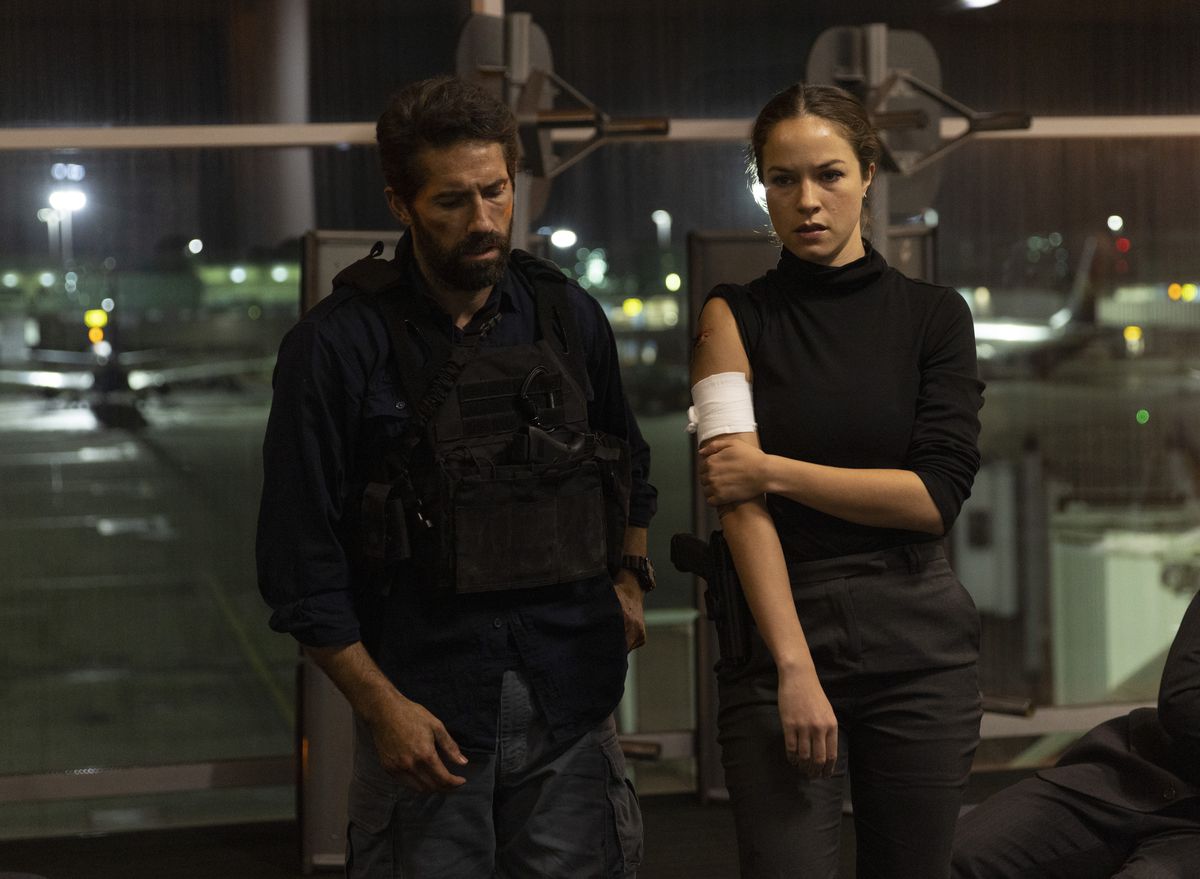
By the way, that’s my favorite fight in the movie.
Me too. We don’t cut during the fights. That’s part of the reason that Scott loves doing it as well, is that we really make him do it for two, three minutes. And what I love about the metro fight is because of all of the foreground, poles, beams, and glass, it’s actually impossible to have even put a cut in there. So that is just two physically amazing on-screen fighters [Adkins and Aaron Toney] really going for it. And I’m privileged that they did that for us on a moving train at about 30 miles per hour.
What strikes me as one of the hardest storytelling challenges of the format are the transition sequences. How did you approach getting from scene to scene within this structure?
[That’s where] the advantage of going to the location [came in]. Having a 10-page outline, finding the location, then writing the script around the location, and then doing set visits backward and forward. And also it being a [real] location, not being something we were building that people had to try and understand.
Because there’s a lot of One Shot that is actually a set. Like, we use the exterior terrain, but actually all the interiors are generally fudged together in a gym on the location. And that was much easier for [screenwriter] Jamie [Russell] to write those passages of time. And then I had a couple of actor friends come down about three months before we shot the movie, and on a GoPro, we walked every scene just for script timings.
You want to do another one of these? One Last Shot, perhaps?
Yeah, I do want to do another one. I’ve got no spoilers for you. There’s no green light yet. I’m gonna try my best and knock on every door to hopefully get us there. But there’s no news, other than the title. And it seems like the internet has found the title itself.
I mean, you set us up for it.
[Laughs] Me and the producers have talked about it in the past, but it’s sort of organically been like this little bit of a roller coaster online, which is fun and exciting. So I desperately would love to do that movie, but we’re not there yet. Let’s see.
One More Shot is available for digital rental or purchase on Amazon, Apple TV, and Vudu.
- SEO Powered Content & PR Distribution. Get Amplified Today.
- PlatoData.Network Vertical Generative Ai. Empower Yourself. Access Here.
- PlatoAiStream. Web3 Intelligence. Knowledge Amplified. Access Here.
- PlatoESG. Carbon, CleanTech, Energy, Environment, Solar, Waste Management. Access Here.
- PlatoHealth. Biotech and Clinical Trials Intelligence. Access Here.
- Source: https://www.polygon.com/24042893/one-more-shot-director-james-nunn-interview-scott-adkins
- 11
- 20
- 2021
- 30
- 7
- 8
- a
- aaron
- ability
- able
- About
- accomplished
- Action
- actors
- actually
- add
- adding
- adkins
- ADvantage
- after
- Against
- airport
- Airport Security
- All
- almost
- also
- Although
- always
- am
- amazing
- Amazon
- amount
- an
- and
- Another
- anticipated
- Apple
- apple tv
- applied
- approach
- ARE
- AREA
- ARM
- around
- artist
- as
- At
- audience
- authenticity
- availability
- available
- away
- back
- base
- BE
- became
- because
- becomes
- been
- before
- being
- believe
- ben
- BEST
- between
- BIG
- bigger
- bind
- Bit
- bomb
- break
- Building
- but
- by
- calling
- came
- CAN
- car
- Carousel
- Catch
- challenges
- claim
- clarity
- close
- cold
- collaboration
- collective
- combat
- come
- comes
- coming
- comments
- compelling
- confident
- continuous
- conventional
- Core
- could
- Couple
- Covid
- Crew
- Cut
- day
- derelict
- Design
- designed
- desperately
- DID
- difference
- different
- difficult
- difficulties
- digital
- digitally
- Director
- do
- doing
- done
- door
- down
- During
- each
- easier
- easily
- effort
- Elaborate
- else
- embarked
- England
- enjoying
- enough
- entire
- Environment
- equally
- especially
- even
- EVER
- Every
- everybody
- Everywhere
- Exciting
- Exercise
- experiment
- Face
- faced
- fake
- fall
- familiar
- fan
- fans
- favorite
- feedback
- feel
- feels
- fight
- Fighting
- fights
- Film
- Filming
- find
- finding
- First
- Fits
- Flights
- Fly
- flying
- Focus
- Following
- food
- For
- forcing
- forever
- format
- Forward
- found
- four
- Frame
- Friends
- from
- front
- fruits
- full
- fun
- funny
- future
- Gaming
- generally
- geography
- Get
- getting
- give
- given
- Glass
- go
- going
- gone
- good
- got
- Green
- Ground
- Grounded
- gun
- guns
- gym
- had
- hand
- happens
- Hard
- harder
- has
- Have
- having
- he
- her
- hidden
- Hide
- him
- his
- hold
- Honestly
- Hopefully
- hopes
- hostages
- hour
- hours
- How
- How To
- HTTPS
- huge
- hundred
- i
- idea
- if
- immediately
- immersion
- impossible
- in
- initial
- interact
- interest
- interiors
- International
- internationally
- Internet
- Interview
- into
- Is
- IT
- itself
- james
- journey
- jpg
- just
- K
- keep
- kind
- knives
- know
- knowledge
- knows
- Land
- last
- layout
- LEARN
- learned
- Legends
- Level
- light
- lightly
- like
- lined
- Little
- location
- locations
- London
- Long
- Look
- looked
- looking
- looks
- lot
- love
- loved
- loves
- make
- MAKES
- Making
- man
- manage
- managed
- martial
- me
- mean
- meetings
- Merge
- metal
- Metro
- Michael
- Middle
- midnight
- Military
- minutes
- miracle
- mom
- money
- months
- more
- most
- movie
- Movies
- moving
- much
- my
- myself
- narrative
- nation
- needed
- never
- newly
- news
- Next
- Night
- Nine
- no
- normal
- not
- now
- number
- Obviously
- occasion
- of
- off
- on
- once
- One
- online
- Opportunity
- or
- organically
- original
- originally
- Oscar
- Other
- otherwise
- out
- outside
- over
- overwhelmingly
- Paper
- part
- particular
- passages
- Past
- People
- per
- perfect
- performance
- pitch
- Planes
- plato
- plato data intelligence
- platodata
- platogaming
- pleased
- Point
- Points
- Polygon
- Positive
- present
- private
- privileged
- probably
- Problem
- problems
- Process
- producer
- Producers
- proving
- purchase
- push
- pushing
- put
- questions
- rails
- Raw
- Real
- realize
- really
- reason
- reasons
- reception
- released
- Rent
- respond
- response
- restrictions
- return
- Reviews
- rig
- rise
- road
- rubber
- Run
- running
- runway
- Safety
- same
- saving
- say
- scene
- School
- scott
- screening
- script
- second
- Secret
- security
- see
- seems
- seen
- sequel
- Series
- set
- setting
- shooting
- shot
- shoulders
- show
- showed
- shows
- skill
- skills
- sleep
- So
- solid
- some
- someone
- something
- somewhere
- Sony
- sony pictures
- Soon
- sound
- Speaking
- spinning
- stands
- start
- started
- starts
- stop
- Stories
- storytelling
- Strikes
- String
- structure
- style
- sure
- Switch
- tactical
- Take
- takes
- Talent
- Talks
- Team
- Technical
- technically
- terms
- terrain
- tested
- than
- that
- The
- The Future
- the world
- their
- Them
- themselves
- then
- there
- These
- they
- thing
- things
- think
- this
- those
- though
- thought
- three
- Through
- ticking
- Tim
- time
- times
- timings
- Title
- to
- together
- told
- tom
- too
- totally
- tourists
- Train
- transition
- tried
- try
- trying
- tv
- two
- U.K.
- Understand
- understanding
- unique
- up
- us
- use
- Ventures
- very
- Vibe
- waiting
- wake
- walking
- want
- wanted
- war
- was
- way
- we
- weaker
- weather
- well
- went
- were
- western
- What
- when
- where
- whereas
- whether
- while
- white
- WHO
- whole
- wife
- will
- winner
- with
- within
- worked
- working
- world
- Worlds
- would
- write
- writing
- written
- wrong
- wrote
- yet
- you
- your
- Z
- zephyrnet
